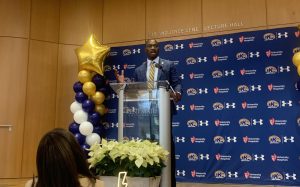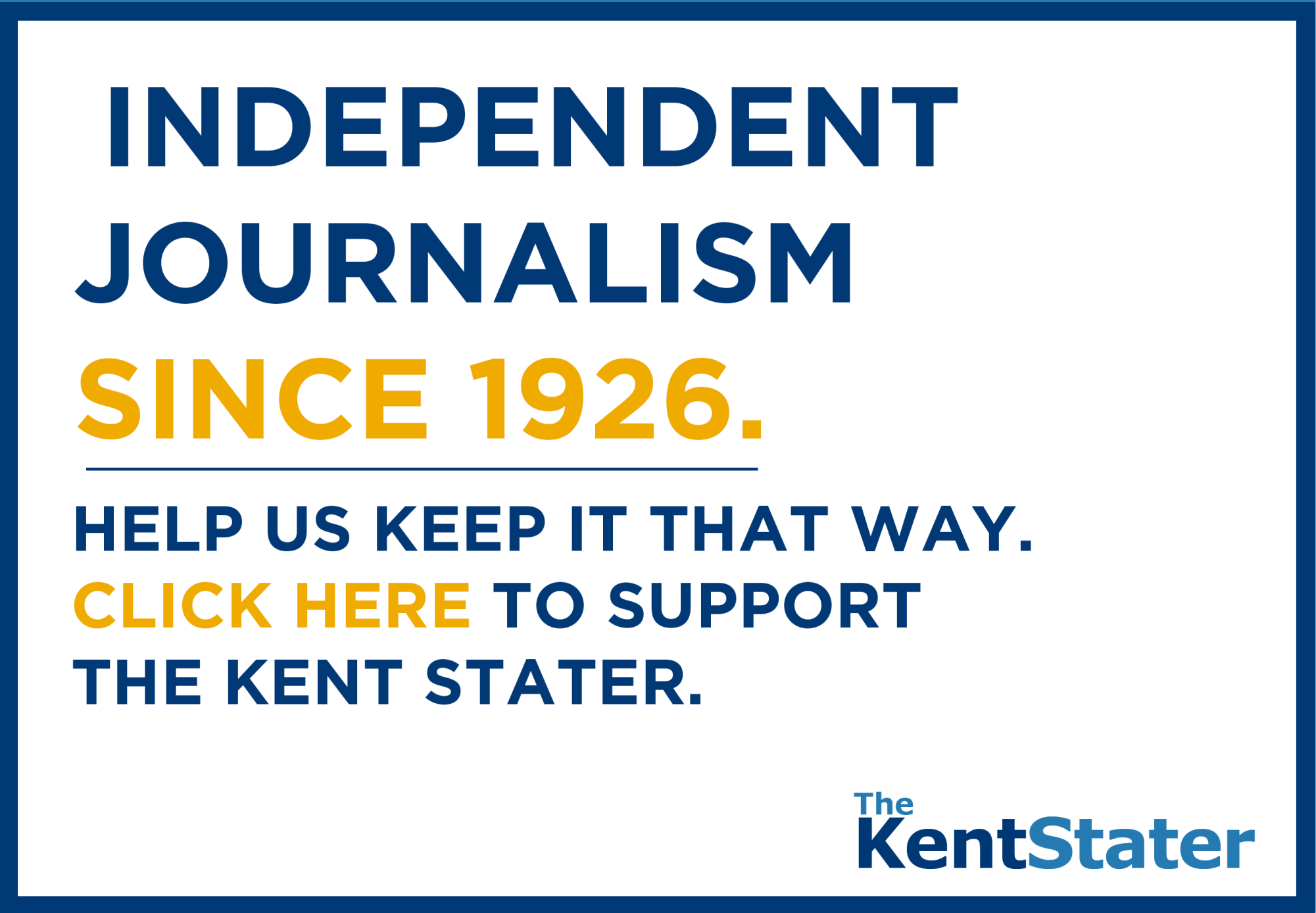Veteran witnessed attack on Pearl Harbor, D-Day
November 13, 2007
Local man reflects on his past wartime experiences
Charlie Russell. Tyrel Linkhorn | Daily Kent Stater
Credit: Ron Soltys
Charlie Russell had just finished his Sunday morning breakfast shortly before 8 a.m. and settled down on his cot aboard the USS Vestal to read a paperback western novel when a raucous explosion knocked him to the ground.
General quarters alarms were going off as Russell gathered himself.
“I got up off the deck, off my butt, and tried to close the hatch, which I couldn’t do by myself because it was too big, and I was looking up at one of the Jap planes going and I saw the orange balls — and I knew what it was then.”
It was Dec. 7, 1941, and the United States was about to be dragged into World War II.
Russell, then 19, was a machinist mate on the Vestal, a Navy repair ship. The night before, his ship had tied up to the USS Arizona, a battleship in need of some minor repairs.
He and his crewmates were in the wrong place at the wrong time.
“We weren’t a primary target,” he said. “We just happened to be where we were at. The big ships were the main targets.”
Today, the Arizona sits in a watery grave 30 feet below the surface of Pearl Harbor, its hull still leaking a few drops of oil each day.
Russell, now 85 and gray, sat straight as he recalled the details from that Sunday morning and the four years of war that followed.
“We were totally unprepared. The entire fleet was unprepared,” he said.
The Vestal took two direct hits, one that went completely through the ship and exploded underneath and another that went off in dry storage and knocked Russell from his cot.
The Arizona ablaze and sinking, crewmen on the Vestal cut the ship free from the battleship with fire axes.
Luckily, the ship still had steam up and was able to run aground on Aiea beach.
Once aground, Russell and his mates watched hundreds of Japanese medium bombers, low-level bombers, dive bombers and torpedo bombers flew overhead.
“All the military targets, they got hit.”
Armed with no anti-aircraft guns, there was little the crew of the Vestal could do.
“We did damage control and as much we could do,” he said.
When the fires were put out and the smoke cleared, 21 ships from the U.S. Pacific fleet were damaged or sunk, nearly 350 U.S. aircraft were destroyed or damaged and some 2,400 Americans were dead.
Once the Vestal was repaired, the crew began to work on repairing all the other damaged ships in the harbor.
“Our job was cruisers and battleships, but we worked on other ships,” he said.
There were six or seven other repair ships in the harbor, but the work was intense.
“We worked day and night.”
Russell left Hawaii in February, returning to the states for more training.
Shortly after, he sailed to North Africa on the USS Ancon, one of the Navy’s amphibious flagships. The Ancon played a role in the invasions of North Africa, Sicily and Salerno, carrying troops and cargo.
Just before dark one night while harbored in Salerno after the invasion, an Italian submarine surfaced. The 60 or so men on the sub had somehow managed to get past the ships guarding the mouth of the harbor.
“That was a weird feeling seeing that ship just pop right out of the water,” he said. “It wasn’t more than 50 yards from us.”
But the sub had surfaced with a white flag flying. They were surrendering to the Ancon.
It was the only enemy submarine Russell saw during the war.
The next stop for Russell and the Ancon was Plymouth, England. They were preparing for the invasion of Normandy.
“We knew that’s where we were going,” he said. “We didn’t know when. We were there almost a year before the attack took place.”
June 6, 1944, with Russell aboard, the Ancon left its foggy English port and set sail across the choppy English Channel, bound for the Omaha Beach sector of the Norman coast. It was the flagship for that section of beach.
The closest Russell was to the beach was about 500 yards out.
He couldn’t see much, though he did see German fighters attacking, including one which strafed his ship. Little damage was done in the low-level attack.
The Allied planes made the biggest impression for Russell.
“We saw lots of them. Transports, fighters and bombers going inland. It was an experience, a sight to see,” he said.
After returning from the coast of France, he went back to England and eventually back to the United States, where he eventually was transferred off the Ancon and back to the Pacific Theater, where he remained until the end of the war.
Russell, who first entered the service in 1939 on the heels of the Depression as a way to help the family make ends meet, said he’s never regretted enlisting.
“My first enlistment was for six years, and hell, by the time my six years was up, the war was nearing the end,” he said.
Russell stayed in the Navy for 22 years, eventually retiring in 1961.
“It was a good tour of duty,” he said. “I enjoyed it. Saw a lot after the war, even during the war . It was an experience. Some things you wouldn’t want to see again. I still think about it once in a while, but not as much as I used to. I’m 85-years-old now, a lot of things I don’t remember too well. But I feel pretty good, and through that war I met a lot of good people.”
Public affairs reporter Tyrel Linkhorn is interested in recording other veterans’ stories. Contact him at [email protected].












